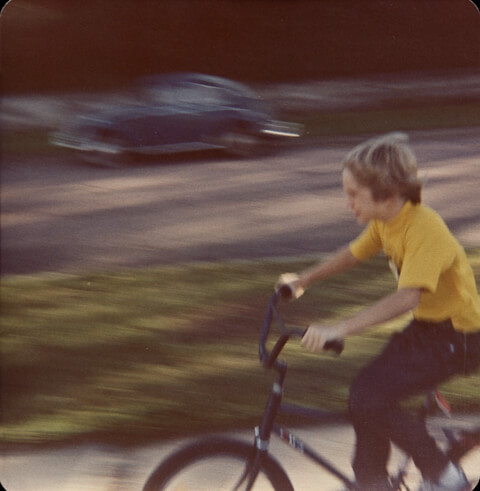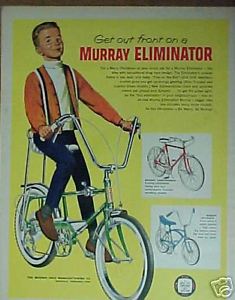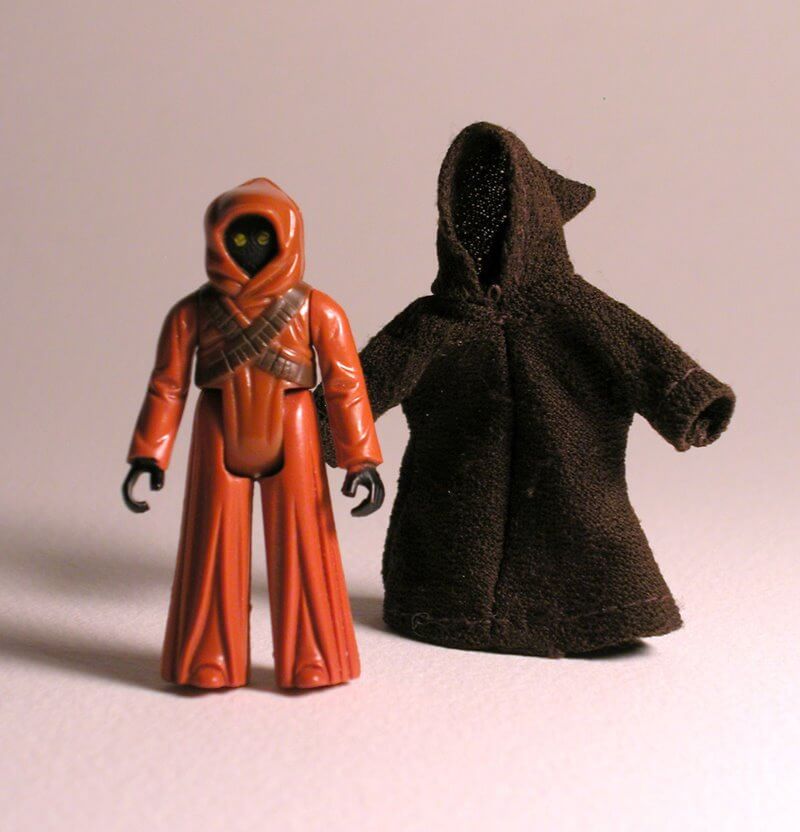Upon the destruction of my first bicycle I needed a suitable replacement. My two-wheeled acrobatics were getting more and more adventurous as my riding skills and my physical size were increasing. By the early part of the summer of 1979, the opportunity presented itself for me to "move up" to a bike that better suited my aggressive riding style.
BMX (bicycle moto-cross) was now in full-swing as a sport. When I had began riding in 1976, the roots of the sport had been planted on the west coast. It took a few years for its popularity to take seed and move to South Dakota. By about 1979, however, BMX fever had set in among many children of the area.
I was no different. I loved everything I knew about the sport. I loved riding fast, doing tricks, jumping and generally abusing my bicycle. The kind of BMX riding I enjoyed most is now what is called "freestyle". We didn't have all the categories back then. You either rode BMX or you didn't.
A friend of mine (a guy named Lester, if I remember correctly) loaned me an issue of BMX Action magazine, and I was enamored with the contents. I swear I read that magazine until I had it memorized. What I loved most about reading the magazine wasn't the articles. It was the advertisements. Page after page of items a boy who rode a busted-up Stingray copy could only dream of owning.
There was a bike shop on the corner of 12th and Grange in Sioux Falls that was called the "Bike Masters." At the time they along with the "Bike Barn" were the only two serious bicycle shops in town.
The Bike Barn was located on the other side of town, so I rarely had the opportunity to visit that shop. Plus, the main bicycle brand that the Bike Barn sold was Raleigh, of which I had a great deal of distaste. For those of you who are Raleigh bicycle fans please don't send me hate mail; let me explain.
Upon reflection of my hatred for Raleigh bicycles, and their BMX line called "Rampar," the only reason I can come up with is that I remember one kid who owned one and happened to be a real jerk. How's that for justification? In the fifth grade this made perfect sense. In reality the Rampars may very well have been great bikes, but I never would give them a chance due to this idiot. It's funny how we hold on to things like that. Even to this day when I see a Raleigh bike there is a part of me deep inside that feels revulsion, until my analytical side reminds me of the illogical reason to feel this way towards the brand.
Anyway, the Bike Masters store was eight blocks from my school, in the opposite direction from my house. On Monday afternoons I would walk over to the Bike Masters and drool at all the BMX bicycles and accessories they were selling. I would hang out until they would politely ask me to leave. I picked Monday afternoons for no good reason other than I knew if I showed up more than once per week the politeness would probably disappear. Alas, as much as I wanted one, those beautiful shiny BMX bikes at Bike Masters were far too expensive for me to afford.
So on that summer morning when the group of us was riding our bicycles past a garage sale a few blocks from my house, a blue bike caught my eye. Next to the new BMX bikes in the store, it couldn't compare. However, next to my old bike which was (quite literally) falling apart, it looked like a masterpiece.
The paint was blue, with a slight hint of sparkle. It had a narrow solo seat with light padding. The handlebars were the "old school" BMX bars that were much shorter and wider than the ones that have since become the standard. It had chrome heavy-duty rims with big knobby tires. It had pads on the crossbar and the goose neck to give it that real BMX look.
The frame, however, was nothing like most BMX bikes. Rather than a single top tube, it had two smaller diameter tubes that ran from the head tube all the way back along either side of the seat post, where they became the seat stays. The seat stays, rather than being straight tubes running from the rear axle up to the seat post, were curved so they went vertically up from the rear axle, then bent forward. It was a very unique looking frame.
The frame was solid steel. This, along with the heavy-duty rims meant that the whole bike had to weigh over 50 pounds. I remember that it was a real tank, but it was so much better than my current ride. That coupled with the fact that the price was within my budget sealed the deal for me. I had to have it.
As I explained in my article on my first bicycle, my father and I had an agreement that if I saved up half the amount for another bike, he would match the remaining half. I had frittered away $30 in my savings account, which was a kingly sum for a soon-to-be fifth grader in 1979. The bike was $60. This certainly was a sign from God Almighty that I was destined to own this bike.
That evening when my father came home from work, I told him about the bike. We walked over after supper and after he gave it the once over and did a little haggling, I rode home with some new wheels.
The bike had been "de-badged" and didn't have any manufacturer's markings. It obviously was an older bike that had been modified to function as a poor-man's BMX bike. That was OK by me as I was a poor man, or at least a poor grade-schooler. A sticker had been placed on either side of the down tube that said "BMX", to reinforce the false notion that this bike was race-ready. On each of the seat stays were stickers that said "Screamer".

I rode the bike for quite a while not knowing what brand it was, until one day I was flipping through an old issue of Boy's Life magazine and I came across an advertisement for BSA endorsed bikes produced by the Murray corporation. The ad had two older scouts on Murray ten-speeds, standing next to a cub scout on a single speed Murray. I recognized the frame on the cub scout's bike as being the same as my bike. Looking at the picture, however, the frame and fork were about the only things that were left as original on my bike.
So as I was doing some research in preparation for writing this article, I decided to see if I could find more information about this bike. Specifically, I wanted to know if I could figure out the model name and when it was made. After checking out some vintage bike web sites, I figured out that this bicycle was a Murray Eliminator. Armed with this information, I stumbled across this site which has a lot of information about the Murray Eliminator.
As it turns out this model bike was built between 1968 and 1974. It came in several flavors and styles, many of them featured multiple gears with a top post mounted shift lever. Whether or not my bike originally had this or not is unknown, as by the time I owned it the bike was a single gear with a coaster brake.

Another interesting discovery was that Murray built many of these bikes for other companies, who re-badged them and sold them as their own. One of the versions was sold by Sears and marketed as the "Screamer" which coincidentally was the sticker that was on the rear seat stays of my bike. The stickers that were on my bike did not appear to be the factory type that were normally applied. In addition I believe my bike had been repainted, and all of the other branding had been removed. So this may have just been a strange coincidence, or perhaps my bike had originally been a Sears Screamer? In the end I guess it makes no difference but it does make me wonder.
Once again I had a bicycle that didn't have pieces falling off of it, had straight rims, and would actually turn left without the steering sticking. The heavy-duty rims would stand up to all of the abuse I could throw at them, half due to them being stronger and the other half due to the sheer weight of the bike made it difficult to get the air I desired. I remember that riding wheelies on this bike was challenging, primarily due to the amount of effort it took to get the front wheel off the ground.
After riding the bike for a few months, another issue had made itself apparent. The gearing was way too high for the kind of riding I was doing. I have no idea how many teeth were on the chain ring, and how many were on the sprocket but they can be summed up by saying "a lot" and "not many". This was great for going down hills as the bike could really hit some top speeds, but it was terrible for going up hills or trying to accelerate quickly at the start of a race. Especially considering the amount of weight one was trying to move.
In addition to the large chain ring, the crank length was quite short, so there was no advantage of leverage. The result of this was that it took a lot of force to get the pedals moving, and once you were your legs were spinning in small circles.
One day I was scouting out another garage sale (from a very young age I was hitting the garage sales whenever I saw them) and came across a crank and chain ring for sale. I'm not sure of the brand, but it had both longer crank arms and a fewer teeth. I ran home and scraped together my pennies, then went back and bought it. This certainly would help my speed issues!
Unfortunately, once I got it home and attempted the swap, I realized that the short arms on the old crank were there for a reason. The bottom bracket on the bike was so low to the ground that the bigger crank would cause the pedals to scrape. Disheartened at spending all my money on what turned out to be a useless venture, I threw the crank in the garage with the other junk collecting dust for all of eternity.
I wound up riding this bike for more than a year, which included two summers. At the start of sixth grade, I undertook a paper route. This provided me with numerous challenges and stories, but most importantly it provided me with more money than I had ever had in my whole life. Not a lot of money, just more than I had.
With my new found wealth, I was able to save and purchase my dream bike. At least it was my dream bike among those in the lower end of budget BMX bikes. In any event, in November of 1980, this blue Murray Eliminator was no longer my main wheels.
I had this weird idea that I would keep the new bike in good shape by only riding it on special occasions, and riding this Murray the rest of the time. I think that lasted about a day, until I realized how much nicer my new bike rode in comparison.
So the Murray got stashed in the garage with the other junk. It didn't stay there long, however. My brother had grown sick of his first bike (which I can understand as it was a complete piece of trash) and had started riding my Murray instead.
So at some point during that year, I agreed to trade full ownership of the Murray for his Kenner Large Size Star Wars Jawa action figure. I know, it was a weird trade, but for some reason I loved that Jawa. I probably don't want to know how much money the large sized Star Wars figures command these days.

My brother rode that blue Murray for many years. In fact, I don't recall him owning another bicycle until he moved out of the house and lived on his own. At some point he managed to break the frame where the down tube connected to the head tube. A friend of my father's welded it back together and he rode it for quite some time this way. A few years after that, the left side of the handlebar snapped clean off.
The bike was deemed not worth fixing, and was thrown behind the garage. After a few years of exposure to the elements, the rust won the battle and the bike was beyond salvage. It got thrown on a trailer with a bunch of other junk getting hauled to the dump.
I look back upon many items from my childhood and wish I could have them again. That Murray Eliminator is not one of them, despite the fond memories associated with that time of my life. I do wish I knew what happened to that Jawa, however.
Return To The Main Other Gallery
This page last updated on 07/11/2018



